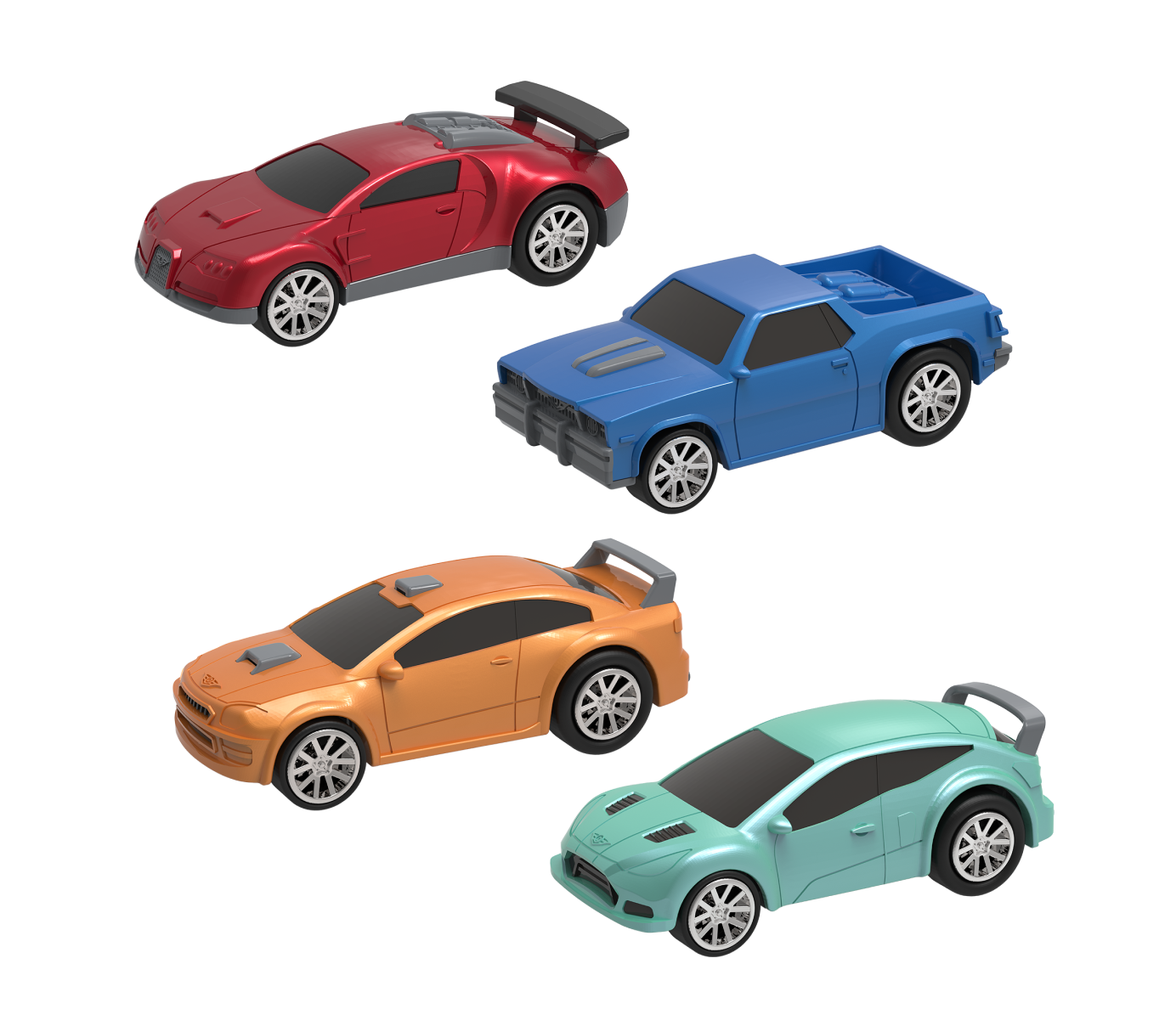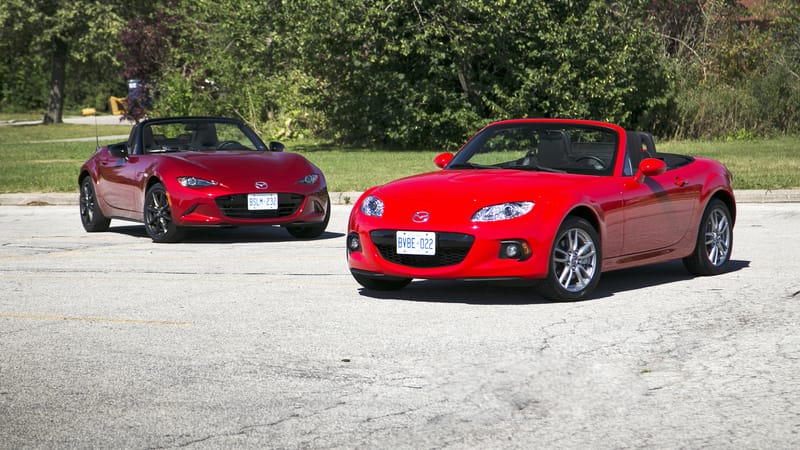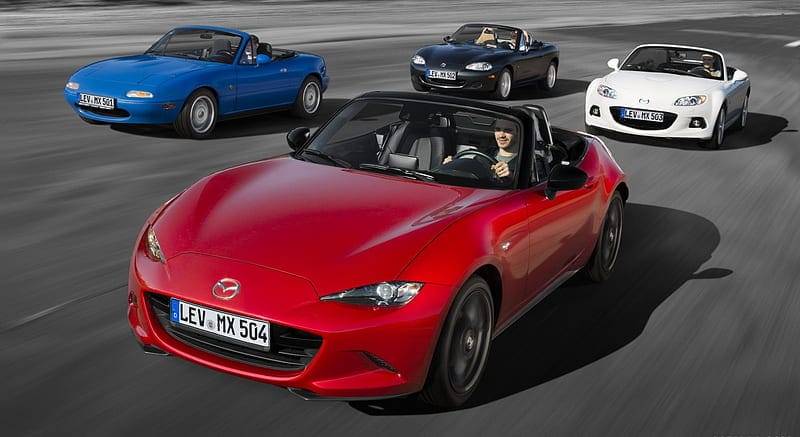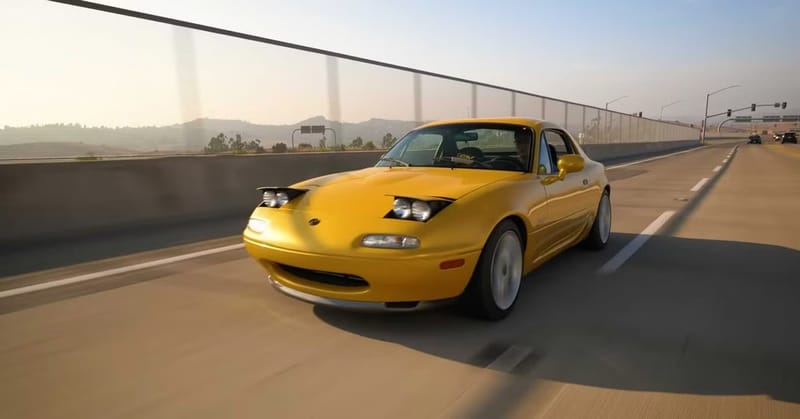Roadster Revival in the 1980s
Roadster Revival in the 1980s The 1980s was a transformative era for the automotive industry, marked by a remarkable resurgence of the roadster. After a period of decline in the preceding decades, the roadster made a comeback, captivating car enthusiasts and capturing the attention of the masses. Th

Roadster Revival in the 1980s
The 1980s was a transformative era for the automotive industry, marked by a remarkable resurgence of the roadster. After a period of decline in the preceding decades, the roadster made a comeback, captivating car enthusiasts and capturing the attention of the masses. This blog post explores the roadster revival in the 1980s, delving into the factors that led to its decline, the key players in its revival, and the impact it had on the automobile industry and consumer trends.
Before we delve into the roadster revival, it is important to understand the decline that occurred prior to the 1980s. The roadster, with its open-top design and sporty characteristics, had once been a symbol of freedom and adventure on the road. However, changing consumer preferences, fuel efficiency concerns, and the rise of more practical and economical car models led to a decline in roadster production and sales.
The decline of the roadster was influenced by various factors. Rising fuel prices and a focus on fuel efficiency prompted manufacturers to prioritize smaller, more economical cars over the larger, less fuel-efficient roadsters. Moreover, the emergence of new automotive technologies and design trends, such as the rise of the compact sedan and the popularity of hatchbacks, further contributed to the decline.

Toy Cars
Race to the finish line with the Turbocharge Stock Cars (4 Pack) from DRIVEN by Battat! These 4 pull-back toy vehicles are ready to race! Each one comes in a unique style.
What we like
Nice colors
What We Don’t Like
Too expensive $161 on Amazon

The impact of the roadster’s decline on the automobile industry was significant. Many iconic roadster models were discontinued, and manufacturers shifted their focus towards more practical and family-oriented vehicles. However, the declining popularity of roadsters did not go unnoticed by consumers. There was still a segment of enthusiasts who longed for the thrill and excitement that only a roadster could provide.
The 1980s marked a turning point for the roadster, as it experienced a revival that would shape the future of the automotive industry. This revival was fueled by the entry of key players who saw the potential in reviving the roadster concept. Companies like Mazda, Mercedes-Benz, and BMW introduced new roadster models that captured the imagination of car enthusiasts and reignited the passion for open-top driving.

Technological advancements played a crucial role in the roadster revival. The development of lightweight materials, improved aerodynamics, and advanced engine technology made it possible to create roadsters that were not only exhilarating to drive but also fuel-efficient and reliable. These advancements contributed to the resurgence of the roadster and attracted a new generation of consumers.

The consumer response to the roadster revival in the 1980s was overwhelmingly positive. Car enthusiasts embraced the return of the open-top driving experience, and the market witnessed a surge in roadster sales. The revival of roadsters also sparked a shift in consumer preferences and market trends, with other manufacturers following suit and introducing their own roadster models to meet the growing demand.
The impact of the roadster revival extended beyond the 1980s. It brought about significant changes in automobile design, with manufacturers incorporating roadster-inspired elements into their lineup of cars. The revival also influenced the modern car market, with roadsters continuing to be popular choices among consumers who seek a thrilling driving experience.
The cultural impact and legacy of the roadster revival cannot be overstated. The iconic roadster models from the 1980s, such as the Mazda MX-5 Miata, the Mercedes-Benz SL-Class, and the BMW Z1, became symbols of style, freedom, and the joy of driving. These models continue to be revered today, representing a golden era in automotive history.
In the upcoming sections of this post, we will explore the key players in the roadster revival, the technological advancements that contributed to its success, and the lasting impact it had on automobile design, the modern car market, and popular culture. Join us as we delve into the fascinating world of the roadster revival in the 1980s.
Understanding the Roadster: An Introduction
The roadster is a unique and iconic type of automobile that has captivated car enthusiasts for decades. Before we dive into the roadster revival of the 1980s, let’s take a moment to understand what makes a roadster so special.
At its core, a roadster is a two-seater convertible car that emphasizes the joy of open-top driving. It is designed to provide an exhilarating and immersive driving experience, with a focus on performance, agility, and style. Roadsters typically feature a sleek and sporty design, with a low-slung body, long hood, and a compact size.

One of the distinguishing features of a roadster is its convertible top. This retractable roof allows occupants to fully embrace the elements, with the ability to enjoy the wind in their hair and the sun on their faces. The convertible top can be manually or electronically operated, adding an element of excitement and versatility to the driving experience.
Roadsters are often equipped with high revving engines that deliver impressive acceleration and handling capabilities. They prioritize performance and agility, allowing drivers to feel connected to the road and enjoy the thrill of driving at higher speeds. The lightweight construction and balanced weight distribution of roadsters contribute to their nimble and responsive handling characteristics.

Traditionally, roadsters have been associated with classic and vintage car models, with some of the most iconic examples dating back to the early 20th century. However, the concept of the roadster has evolved over time, adapting to changing consumer preferences and technological advancements.
In the modern context, roadsters continue to embody the spirit of freedom, adventure, and pure driving pleasure. They offer a unique blend of style, performance, and open-air motoring that remains highly sought after by car enthusiasts and those who crave a unique driving experience.

Now that we have a better understanding of what defines a roadster, we can explore the decline it faced prior to the 1980s and the factors that led to its eventual revival. Join us as we delve deeper into the story of the roadster revival in the 1980s and the impact it had on the automotive industry and popular culture.
The Decline of the Roadster Pre-1980s
The roadster, once a symbol of freedom and excitement on the road, experienced a decline in popularity leading up to the 1980s. In this section, we will explore the factors that contributed to this decline, the impact it had on the automobile industry, and how consumers responded to the changing landscape.
Factors that Led to the Decline
Several factors played a role in the decline of the roadster prior to the 1980s:
- Changing Consumer Preferences: As consumer needs and preferences evolved, there was a shift away from the sporty and open-top roadster towards more practical and economical car models. Consumers began to prioritize factors such as fuel efficiency, interior space, and affordability, which roadsters often couldn’t compete with.
- Rising Fuel Prices: The 1970s witnessed a significant increase in fuel prices, leading to a greater emphasis on fuel efficiency. Roadsters, with their larger engines and lower fuel economy, were less appealing to consumers who sought to save on fuel costs.
- Safety Concerns: Safety became a paramount concern in the automotive industry, leading to the implementation of stricter safety regulations. Roadsters, with their open-top design and minimal safety features, faced criticism for their perceived lack of protection in the event of an accident.
- Technological Advancements: The emergence of new automotive technologies and design trends played a role in the decline of roadsters. The rise of more practical car models, such as compact sedans and hatchbacks, offered greater convenience, utility, and comfort, which appealed to a wider range of consumers.
Impact on the Automobile Industry
The decline of the roadster had a significant impact on the automobile industry:
- Discontinuation of Iconic Models: Many renowned roadster models were discontinued during this period. Manufacturers shifted their focus towards more practical and family-oriented vehicles, leading to the discontinuation of classic roadster names that had once dominated the market.
- Shifting Priorities for Manufacturers: With the decline in roadster sales, manufacturers redirected their resources towards developing and promoting other car types that aligned with changing consumer preferences. This shift in focus led to a decline in roadster production and innovation.

Consumer Response
While the decline of the roadster was evident, there were still enthusiasts who appreciated the unique qualities of these vehicles. Some consumers continued to seek out and maintain classic roadsters, recognizing their historical and cultural significance. However, the majority of consumers gravitated towards more practical and economical car options, causing roadsters to lose their mainstream appeal.
In the next section, we will explore how the roadster made a remarkable comeback in the 1980s, capturing the attention of both car enthusiasts and the wider public. We will examine the key players in the roadster revival and the technological advancements that contributed to its resurgence. Join us as we uncover the fascinating story of the roadster revival in the 1980s.
The 1980s: The Roadster Revival
The 1980s marked a significant turning point for the roadster, as it experienced a remarkable revival that would shape the future of the automotive industry. In this section, we will explore the key players in the roadster revival, the technological advancements that contributed to its success, and the consumer reaction and market trends during this period.
Key Players in the Revival
Several key players emerged during the 1980s, leading the charge in the roadster revival:
- Mazda: One of the most influential manufacturers in the roadster revival was Mazda, with the introduction of the Mazda MX-5 Miata in 1989. The Miata captured the essence of the classic roadster, combining sleek design, nimble handling, and affordability. It quickly became a best-seller and set the benchmark for future roadster models.

- Mercedes-Benz: Mercedes-Benz played a significant role in the roadster revival with the introduction of the Mercedes-Benz SL-Class. The SL-Class redefined luxury roadsters, offering a perfect blend of performance, comfort, and elegance. Its popularity soared, establishing Mercedes-Benz as a leading player in the roadster segment.

- BMW: BMW also contributed to the roadster revival with the introduction of the BMW Z1. The Z1 featured innovative design elements, such as vertically retractable doors, and offered a thrilling driving experience. Although production was limited, the BMW Z1 left a lasting impact on the roadster landscape.

Technological Advancements Contributing to the Revival
The roadster revival of the 1980s was fueled by significant technological advancements:
- Lightweight Construction: Manufacturers employed lightweight materials, such as aluminum and composite materials, in the construction of roadsters. This reduced overall weight, improving performance, and fuel efficiency without compromising structural integrity.
- Advanced Engine Technology: Engine advancements, including fuel injection, improved engine management systems, and turbocharging, allowed roadsters to deliver impressive power and efficiency. These advancements contributed to a more exhilarating driving experience while meeting stricter fuel economy regulations.
- Enhanced Safety Features: In response to safety concerns, manufacturers introduced advanced safety features in roadsters. These included reinforced roll bars, improved braking systems, and the incorporation of crumple zones, enhancing occupant protection.

Consumer Reaction and Market Trends
The roadster revival in the 1980s garnered a positive response from consumers and sparked significant market trends:
- Enthusiast Appeal: Car enthusiasts were drawn to the roadster revival, appreciating the return of open-top driving and the exhilarating driving dynamics that roadsters offered. The revival reignited the passion for roadsters and created a dedicated community of enthusiasts.
- Increasing Sales: The roadster revival led to a surge in sales for manufacturers. Consumers were captivated by the allure of open-top driving and the unique experience that roadsters provided. This increase in sales fueled further innovation and competition within the roadster segment.
- Influence on Other Car Types: The success of the roadster revival had a ripple effect on other car types. Manufacturers began incorporating roadster-inspired design elements and performance features into their lineup of vehicles, creating a broader range of sports cars and convertible models.
In the next section, we will explore the broader impact of the roadster revival on automobile design, the modern car market, and its lasting cultural legacy. Join us as we uncover the far-reaching effects of the roadster revival in the 1980s.
Impact of the Roadster Revival
The roadster revival of the 1980s had a profound impact on various aspects of the automotive industry. In this section, we will explore the changes in automobile design, the influence on the modern car market, and the cultural impact and legacy of the roadster revival.
Changes in Automobile Design
The roadster revival brought about significant changes in automobile design:
- Sleek and Sporty Aesthetics: The revival of roadsters inspired a shift towards sleek and sporty designs in the automotive industry. Manufacturers began incorporating aerodynamic shapes, aggressive styling cues, and flowing lines into their vehicles, even beyond the roadster segment.
- Open-Top Configurations: The resurgence of roadsters reignited the popularity of open-top configurations. Manufacturers started offering convertible versions of their models, allowing consumers to experience the thrill of open-air motoring in a wider range of vehicles.
- Driver-Centric Interiors: The focus on the driver’s experience became more prominent in automobile design. Roadster-inspired features, such as driver-oriented cockpits, ergonomic controls, and supportive seats, began to appear in other car types, enhancing the overall driving experience.

Influence on the Modern Car Market
The roadster revival had a lasting influence on the modern car market:
- Diversification of Sports Cars: The success of roadsters in the 1980s paved the way for a broader range of sports cars. Manufacturers expanded their sports car lineups, offering varying degrees of performance, customization options, and open-top driving experiences to cater to different consumer preferences.
- Popularity of Convertible Models: The revival of roadsters contributed to the popularity of convertible models across various car segments. Convertibles became a desirable feature, appealing to consumers who sought the freedom and excitement of open-air driving in their everyday vehicles.
- Emphasis on Driving Dynamics: The roadster revival highlighted the importance of driving dynamics and performance in the automotive industry. Manufacturers started prioritizing responsive handling, precise steering, and engaging driving experiences in their vehicles, even in non-roadster models.
As we conclude our exploration of the roadster revival in the 1980s, it is clear that this era left a lasting impact on the automotive industry, shaping the design, performance, and cultural perception of roadsters. The revival brought back the excitement and thrill of open-top driving, inspiring a new generation of car enthusiasts and leaving a legacy that continues to resonate today.




